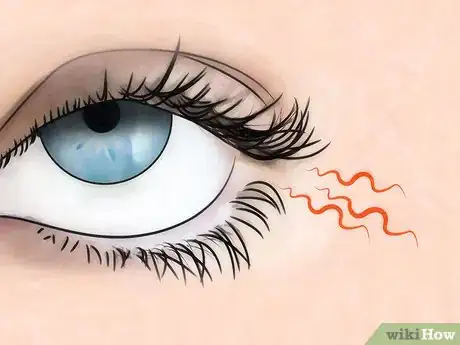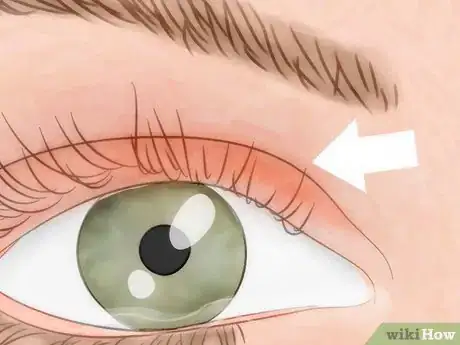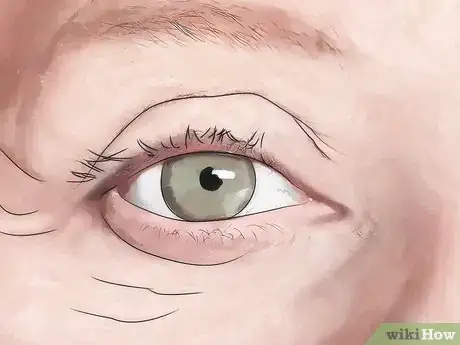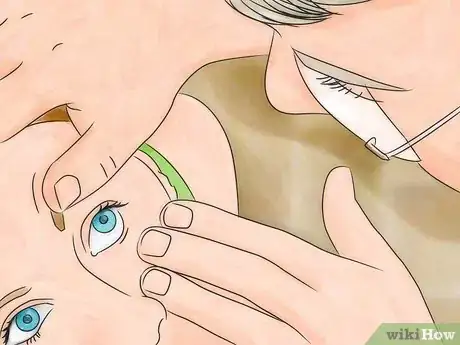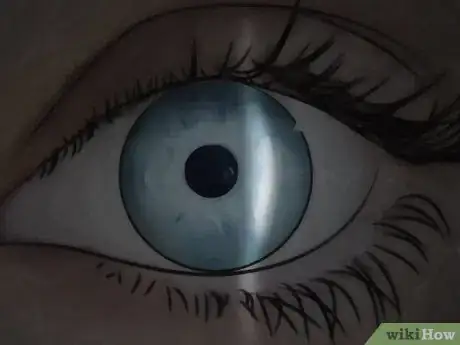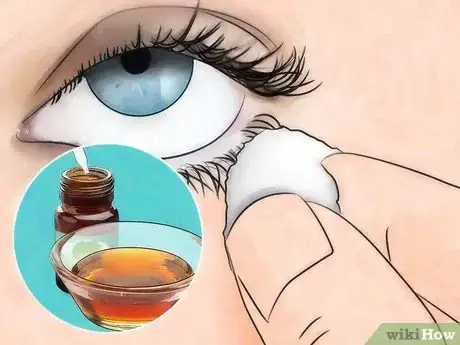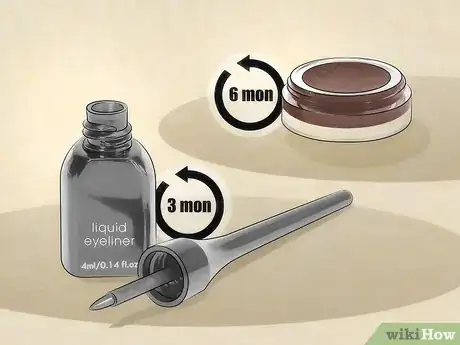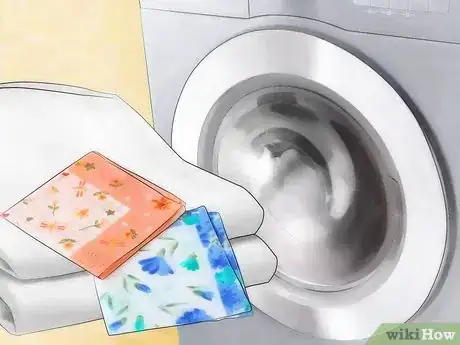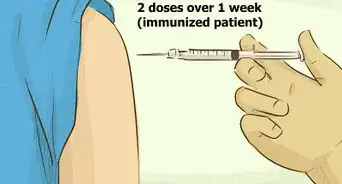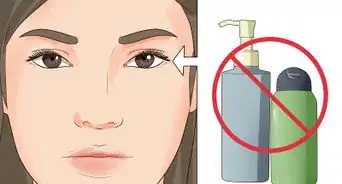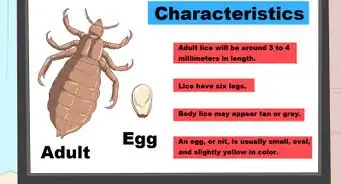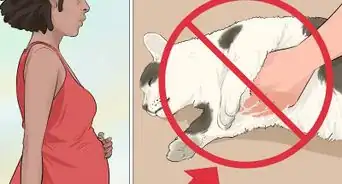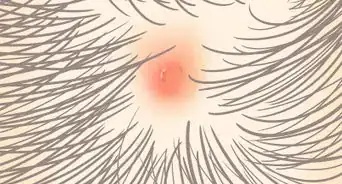This article was medically reviewed by Theodore Leng, MD and by wikiHow staff writer, Jessica Gibson. Dr. Leng is a board certified Ophthalmologist and Vitreoretinal Surgeon and an Assistant Professor of Ophthalmology at Stanford University. He completed his MD and Vitreoretinal Surgical Fellowship at Stanford University in 2010. Dr. Leng is a Fellow of the American Academy of Ophthalmology and the American College of Surgeons. He is also a member of the Association for Research in Vision and Ophthalmology, the Retina Society, the Macula Society, the Vit-Buckle Society, as well as the American Society of Retina Specialists. He received the Honor Award by the American Society of Retina Specialists in 2019.
There are 7 references cited in this article, which can be found at the bottom of the page.
This article has been viewed 159,420 times.
Eye mites, miniature arachnids that are related to spiders, might seem like something from science fiction. They have eight legs and attach to the base or glands of the eyelashes. Eye mites feed off of skin cells and the oils your body makes. If you're prone to getting eye mites, you may have allergic reactions or even develop an eyelid inflammatory condition known as blepharitis. Although eye mites are only found around the eyes, they can travel to other parts of your body, so it's important to recognize if you have them.
Steps
Recognizing Symptoms of Eye Mites
-
1Watch for allergic reactions. Eye mites carry bacteria that can cause infection, especially if you have rosacea. If you have rosacea, pay attention to any changes in your eyes. Signs of an allergic reaction include:[1]
- Watery eyes
- Eyes that hurt
- Red eyes
- Swollen eyes
-
2Think about how your eyes feel. Most people know when they have an eyelash in their eye because it feels like something is in your eye. Eye mites can also make you feel like a foreign body is in your eye. Your eyelids may also feel itchy and you might experience a burning sensation in your eyes.[2]
- You should also consider if your vision has changed. If your eyesight becomes blurry, you may have eye mites.
Advertisement -
3Look at your eyes. Unfortunately, you won't be able to look at your eyelashes and eyelids and tell if you have eye mites. They're so small that they can only be seen under magnification. But, you may notice your eyelids become thicker or crusty if you have eye mites. And, you might lose eyelashes if you have mites.[3] [4]
- Your eyelid can also look red if you have eye mites, especially along the margin or edge.
-
4Consider your risk factors. The risk of eye mites increases as you age. Some studies estimate that over 80% of people over the age of 60 have eye mites and that these tiny creatures may are present on many children too. People with the skin disorder rosacea often have eye mites.[5] [6]
- Eye mites are just as common in men as in women with a similar distribution worldwide regardless of race.
-
5Contact your doctor. If you experience any of these symptoms, you might have eye mites. Unfortunately, they're so small that you can't tell if you have them just by looking at your eyes. And, since many of these symptoms could be caused by other eye problems, you'll have to go to the doctor to know if you have eye mites.
- You can also ask your eye doctor to make an eye mites diagnosis or check your eyes for another eye condition that could be causing your symptoms.
-
6Get an exam. Your doctor will have you sit at a slit-lamp. If you've ever had your eyes checked, the eye doctor used a slit-lamp. You sit with your chin and forehead on a support while a bright light and microscope examine the front of your eye.[7] The doctor will look for the small mites which will be attached to the base of your eyelash. Sometimes, the doctor will pull out an eyelash or two to examine under a microscope.[8]
- Some doctors will pull an eyelash in order to show you the mites under the microscope.
- If the doctor doesn't see any mites, you'll be checked for other conditions that could be causing your eye irritation (like allergies or a foreign object in your eyes).
Treating Eye Mites
-
1Wash your eyes. Mix equal parts tea tree oil and an oil like olive, castor, avocado or jojoba. Dip a cotton ball in the mix and gently scrub around your eyelids and eyes. Leave the solution on your eyes as long as you don't have any stinging. If you do feel stinging, rinse with warm water. Re-apply the solution every four hours for one week and then every eight hours for three more weeks.
- You need to continue washing your eyelashes and eyes so that you account for the lifespan of the eye mite (four weeks).
- Since tea tree oil can irritate, you may want to ask your eye doctor about using it.
-
2Replace your eye makeup. It is not clear if wearing eye makeup increases the risk of eye mites, but if you do wear makeup (especially mascara) make sure the mascara is not old and is well-sealed. Don't forget to wash your makeup brushes at least twice a month. Follow this makeup replacement schedule:[9]
- Liquid eyeliner: every three months
- Cream eye shadow: every six months
- Pencil eyeliners and powders: every two years
- Mascara: every three months
-
3Wash your linens. Because mites can survive on clothing and bedsheets (but are very susceptible to heat), wash all clothing, towels, bedsheets, pillowcases, handkerchiefs, blankets, and any other material that may have come into contact with your eyes and skin in hot, soapy water. Dry them at high heat. Do this at least once a week.
- You should also have your pets checked for mites and wash their linen.
-
4Get medical treatment. Your doctor will probably talk to you about washing with tea tree oil. Although your doctor may recommend an over-the-counter product like permethrin or ivermectin, more research is needed to determine their effectiveness.[10] You'll also need to keep up good hygiene for several weeks so that the mites don't hatch eggs and repopulate your eyelids.
- If you think you have eye mites, see your doctor before starting any treatments. This is especially important if you have rosacea since the eye mites can cause a bacterial infection.
References
- ↑ http://www.aaaai.org/conditions-and-treatments/allergies/eye-allergy
- ↑ http://www.reviewofophthalmology.com/content/c/36411
- ↑ http://emedicine.medscape.com/article/1203895-clinical#b4
- ↑ http://www.reviewofophthalmology.com/content/c/36411
- ↑ http://www.reviewofophthalmology.com/content/c/36411
- ↑ http://emedicine.medscape.com/article/1203895-overview#showall
- ↑ https://www.nlm.nih.gov/medlineplus/ency/article/003880.htm
- ↑ http://www.reviewofophthalmology.com/content/c/36411
- ↑ http://www.goodhousekeeping.com/beauty/makeup/tips/a17714/expired-beauty-products/
About This Article
To know if you have eye mites, watch for symptoms like watery eyes, pain in your eyes, or if your eyes appear red, itchy, or swollen. You may also feel like there's something stuck in your eye, like an eyelash. Other possible symptoms to watch for are blurry vision, a thick or crusty coating on your eyelashes, or loss of eyelashes. If you experience any of these issues, contact your doctor, who can use a special light and microscope to diagnose your condition. To learn how to treat eye mites, keep reading!

